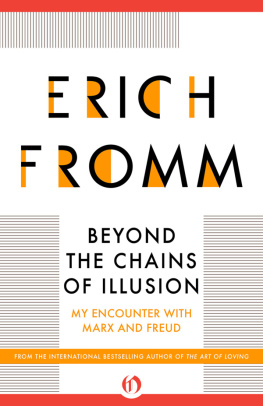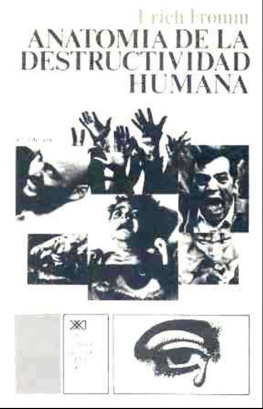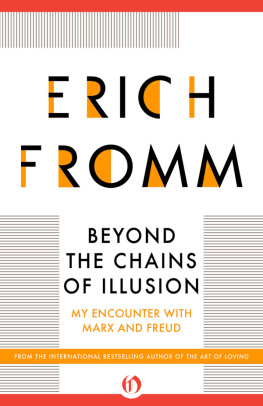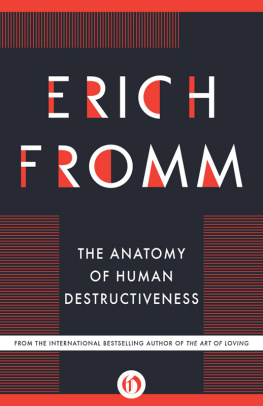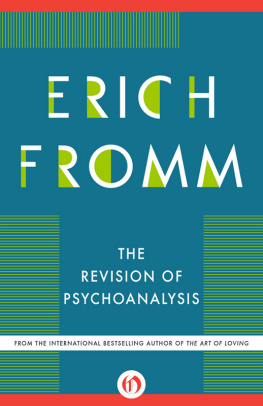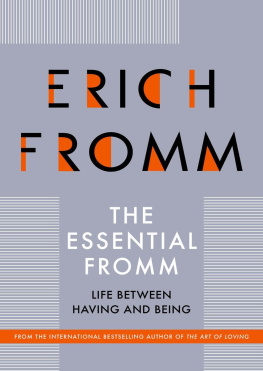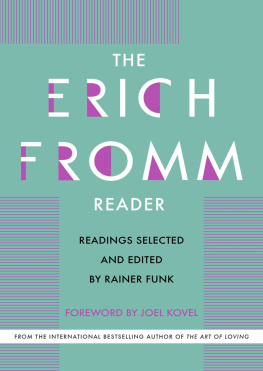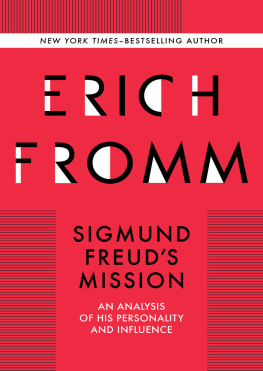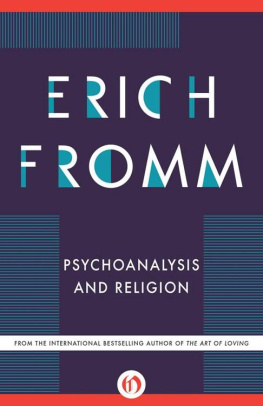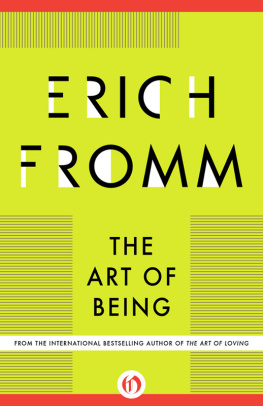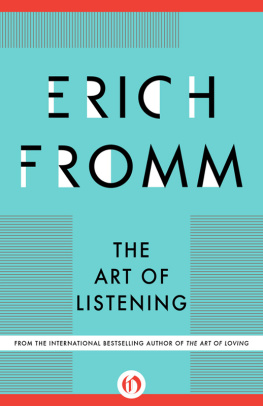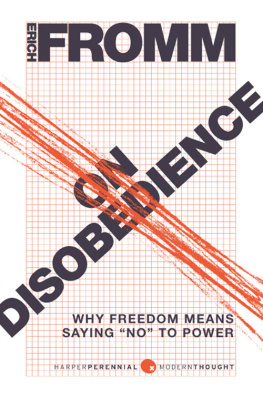A Biography of Erich Fromm
Erich Fromm (19001980) was a German-American psychoanalyst, sociologist, and democratic socialist best known for his classic works Escape from Freedom (1941) and The Art of Loving (1956), and for his early association with the Frankfurt School of critical theory. He is commonly considered one of the most influential and popular psychoanalysts in America, and his works have sold multi-millions of copies throughout the world in many languages.
Fromm was born in Frankfurt am Main, Germany, the only child of Naphtali Fromm, a wine merchant, and Rosa Fromm (ne Krause). His parents were devout Orthodox Jews, and Fromm spent much of his youth studying the Talmud. Though he renounced practicing his religion at the age of twenty-six, Fromms view of the world remained profoundly shaped by Orthodox Judaism and its rejection of assimilation with the mainstream.
Fromms interest in ethics and legal issues led him first to study law at Frankfurt University and, starting in 1919, sociology under Alfred Weber (brother to Max Weber) in Heidelberg. In his 1922 dissertation, Fromm examined the function of Jewish law in three diaspora communities. Introduced by his friend (and later wife) Frieda Reichmann, Fromm became interested in the ideas of Sigmund Freud and started to develop his own theories and methods to understand social phenomena in a psychoanalytic way.
After completing his psychoanalytic training in 1930, Fromm began his own clinical practice in Berlin. By then he was also working with the Institute for Social Research, affiliated with the University of Frankfurt, where a circle of critical theorists around Max Horkheimer became known as the Frankfurt School.
Following the Nazi takeover, Fromm settled in the United States in 1934. Many of his colleagues from the Institute for Social Research had gone into exile in New York City, joining Fromm. He then taught at several American schools and became a US citizen in 1940.
In 1941 Escape from Freedom was published and Fromm started lecturing at the New School for Social Research. He was cofounder of the William Alanson White Institute in New York, and in 1944 he married Henny Gurland, a fellow emigr.
In 1950 Fromm moved to Mexico City, where the climate would better suit his wifes health problems, and he became a professor at the National Autonomous University of Mexico (UNAM). Despite the move, Henny died in 1952, and Fromm married Annis Freeman in 1953.
Mexican Institute of Psychoanalysis, where he served as director until 1973. Following his retirement, Fromm made Muralto, Switzerland, his permanent home until his death.
Fromm published books known for their socio-political and social psychoanalytic groundwork. His works include Escape from Freedom (1941), Man for Himself (1947), The Sane Society (1955), The Art of Loving (1956), The Heart of Man (1964) The Anatomy of Human Destructiveness (1973) and To Have or To Be? (1976).
By applying his social-psychoanalytic approach to cultural and social phenomena, Fromm analyzed authoritarianism in Hitlers Germany; in the United States he described the marketing character, which motivates people to fulfill the requirements of the market and results in increased self-alienation.
In addition to his merits as a psychoanalyst of society and as a social scientist Fromm always stressed the productive powers of man: reason and love. This humanistic attitude pervades his understanding of religion, his vision of the art of living and his idea of a sane society.

With photography becoming popular at the turn of the twentieth century, young Fromm's picture was often taken.

Fromm and his mother, Rosa Fromm, around 1906.

Fromms childhood home at 27 Liebigstrasse in Frankfurt.

Thirteen-year-old Fromm and his father, Naphtali Fromm, celebrate Hanukkah.

A complete Fromm family picture taken in Germany during Fromms Whlerschule student days.

The Association of Zionist students in the summer of 1919. Fromm is in the first row, third from the left.

Fromm and his second wife, Henny Gurland-Fromm, in Bennington, Vermont, in 1946, where they lived part-time until Hennys declining health prompted them to move to Mexico.

Fromm made it a priority to meditate and to analyze his dreams every day. Here he is meditating in his home in Cuernavaca, ca. 1965.

After his wifes passing in 1952, Fromm found love again with Annis Freeman. Here is a message Fromm wrote to Annis during their marriage.

A picture of Fromm and his third wife, Annis at the end of the 1950s in Cuernavaca. They were married for twenty-eight years, until Fromms death in 1980.

Fromm and his students in Chiconuac, Mexico, where, in the sixties, they planned a socio-psychological field-research project.

Though Fromm suffered from several heart attacks during his later years, he was able to smile until the end of his life. The photo was taken two weeks before he died, in 1980.

The Art of Listening
Erich Fromm
Edited and with a Foreword by Rainer Funk

Editors Foreword
Erich Fromm became known to many people as a therapist. For more than 50 years, he practiced psychoanalysis; for more than 40 years, he was active in New York and Mexico City as a teacher, supervisor, and university lecturer at institutes for psychoanalytic teaching and training. Anyone who was in psychoanalysis with him sensed his relentlessness as a seeker of truth and as a critical companion as well as his extraordinary capacity for empathy, his closeness, and the immediacy of his relationship to others.



